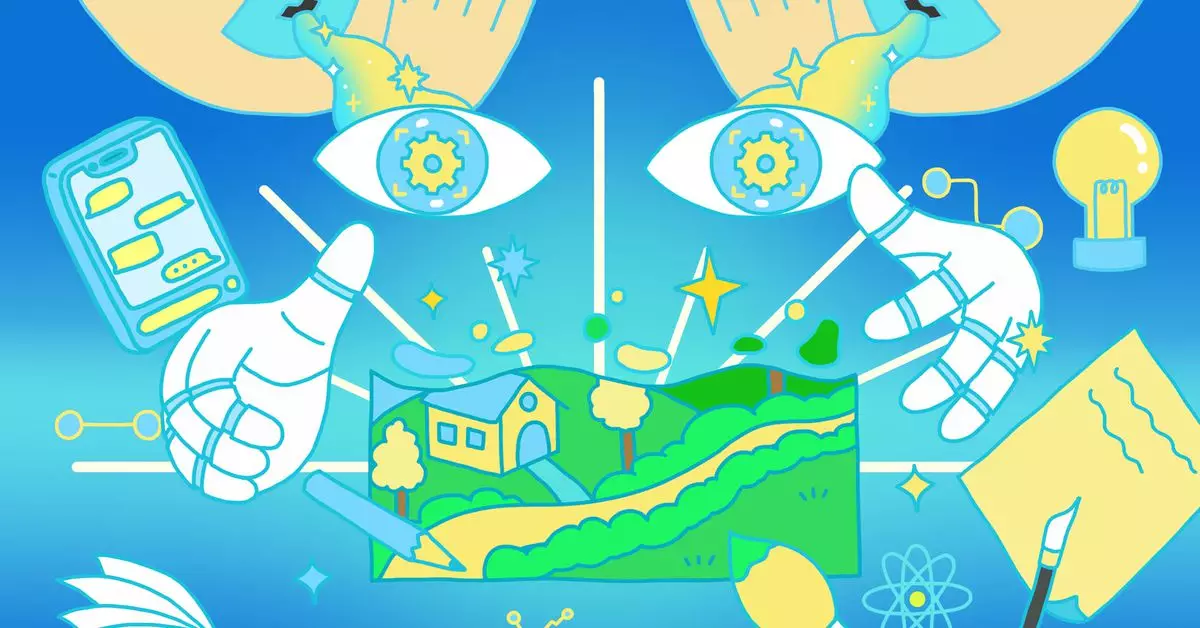In an age where digital manipulation can reshape perceptions, Apple is stepping cautiously into the realm of AI-powered image editing. The tech giant’s latest software enhancements, driven by an imperative to protect authenticity in photography, offer a glimpse into how companies can navigate the fine line between creativity and realism. The introduction of AI features—particularly in the iPhone’s Photos app—reflects a growing awareness of the implications that advanced editing tools can have on public trust in visual media.
Apple’s iOS 18.1 update introduces a new function dubbed “Clean Up,” designed to remove unwanted people or objects from photographs. However, this feature remains conservative compared to competitors like Google and Samsung, which provide users with the capacity to add entirely new elements to their pictures. During an interview with The Wall Street Journal, Apple’s software chief Craig Federighi conveyed that there were extensive deliberations within the company about the ethical implications of such technology. His concerns indicate a commitment to retaining the integrity of photographic content—a desire not to transform an image into an altered fantasy world.
Critically, while Clean Up aims to eliminate distractions from an image, it raises the question of what constitutes an “extraneous detail.” For instance, removing a visible object like a water bottle could be seen as enhancing the aesthetic appeal but might also distort the context in which the photograph was taken. This internal conflict reflects a broader tension in society’s relationship with imagery, where the desire for perfection can often come at the cost of authenticity.
Federighi’s statements echo popular concerns about the nature of photographic truth in a digital world flooded with manipulative technologies. The rapid advancement of generative AI has already altered the landscape of image production and consumption, posing significant risks to public perception. As AI tools become more advanced, they can seamlessly insert fabricated elements into real images—capabilities that pose challenges to discerning what is genuine.
Apple’s navigational function of tagging images edited with Clean Up as “Modified with Clean Up” seeks to address these challenges by ensuring users remain aware of alterations. This measure not only establishes transparency within Apple’s ecosystem but also underscores a growing need for a reliable framework differentiating between original and manipulated content. The initiative reflects an industry-wide shift towards accountability in image editing, reminiscent of the Content Authenticity Initiative led by Adobe, which aims to combat misinformation through metadata.
The battle over photographic integrity and validity isn’t simply a technical issue; it is also cultural. The prevalence of deepfake technologies and AI-driven manipulations stirs apprehension about the reliability of images. Many fear that as technology democratizes image alteration, the public might become increasingly skeptical about the authenticity of depicted realities. This skepticism could undermine trust in visual media—an essential component of communication, journalism, and social interaction.
Moreover, the generational divide complicates the conversation: younger audiences may grow accustomed to heavily edited visuals as norms, blurring the lines between reality and fantasy. The implications of this can be seen in the evolution of social media, where curated and manipulated images are the currency of expression. Herein lies a complex paradox—the same advancements that enhance creative engagement can also contribute to the erosion of communal trust in visual representation.
As the creative industry grapples with the consequences of artificial intelligence on image manipulation, Apple’s measured approach could be seen as a case study for responsible technology design. By choosing to limit certain capabilities while still embracing innovation, Apple is advocating for a more responsible relationship between users and their digital content. The introduction of Clean Up signifies a step into a new era where creativity and integrity are balanced in an increasingly digital world.
Moving forward, as technologists and creators alike work collaboratively to uphold a foundation of authenticity, the dialogue surrounding AI and image editing techniques must also evolve. The call for transparency, combined with a commitment to artistic ethics, may ultimately define the future of photography as a medium that can be both beautiful and truthful.


Leave a Reply